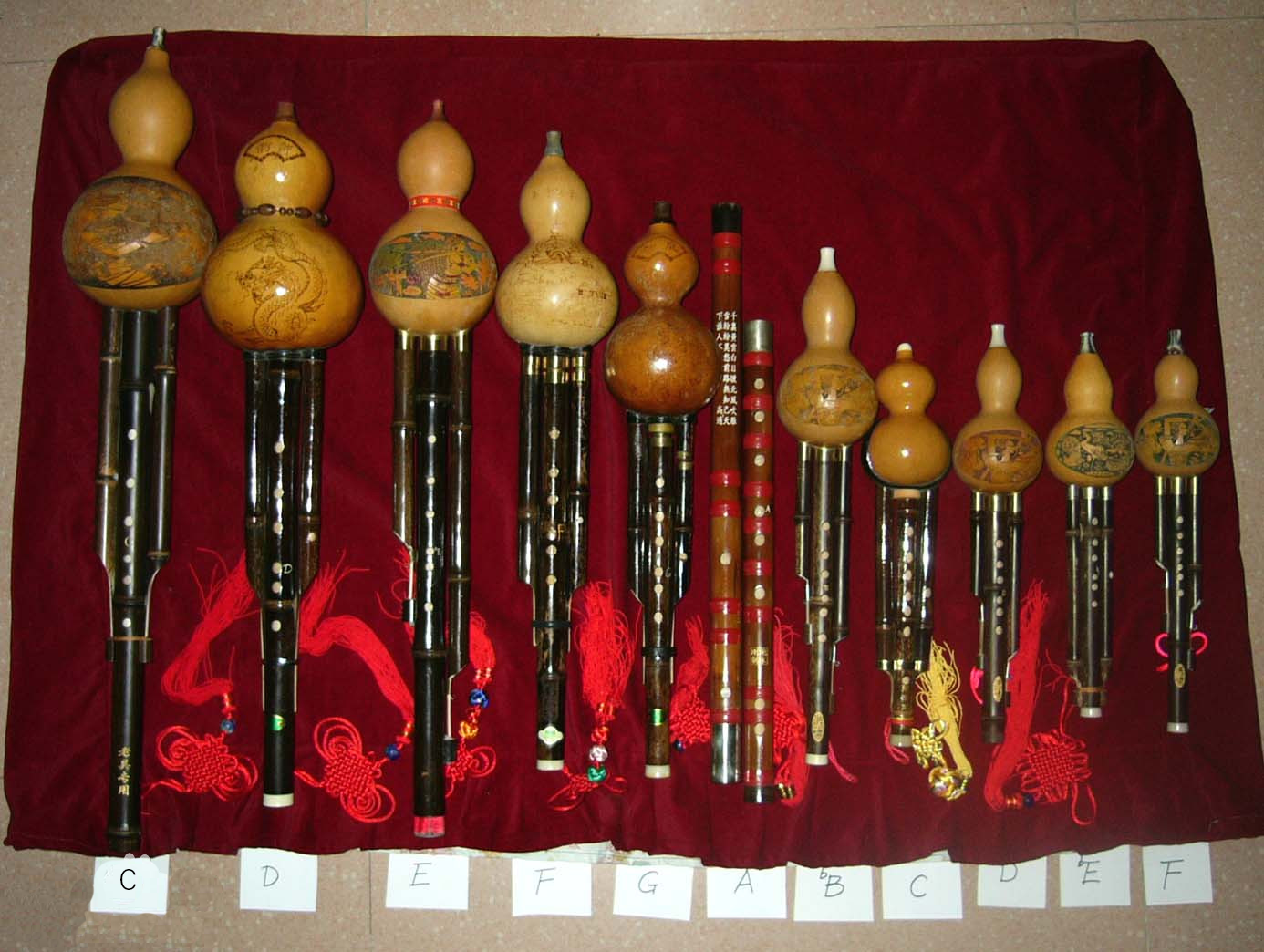Tone and Range of Hulusi
Because the traditional cucurbit flute has seven pronunciation holes (heads) in production, one pronunciation hole has one sound (it can't blow an octave on a sound hole through the change of breath like a bamboo flute), plus a tube tone can make a total of Blow out eight notes. Therefore, in general, the traditional cucurbit flute can change the original fingering by moving the position of the palace sound. In theory, it should be able to play five to six tones. However, due to the limitation of the range and scale arrangement, the traditional cucurbit flute can only change to four tones, and There are only two commonly used tones, that is, the bass tone is "5" and the bass tone is "1".
Taking Hulusi in the key of C as an example, in addition to this key (the third hole is 1), it can also be played in the key of G (the drum tone is "1"). It is a six-tone form based on the national pentatonic scale. There are certain limitations, not all music can be played, it should be selected according to the range of music. The best tune is to use the fourth hole as "1" to play. If the music needs to be transferred, it can be solved by replacing the cucurbit silk. , the commonly used cucurbit silk has B, C, D, F, and so on.

Hulusi is often used to play folk tunes such as folk songs and minor tunes. It is most suitable for playing melody and lyrical music. "Phoenix Tail Bamboo under the Moonlight" and "Love and Love" have become its representative classic pieces. Hulusi is the most popular among the people of the Dai and Achang ethnic groups. It is a musical instrument for entertainment. During festivals, whether it is rowing a dragon boat in the river or putting "gaosheng" on the riverside, or "running" or "running" in the square. In the bamboo building, drinking and feasting, you can hear the beautiful voices of young men and women expressing affection or people walking on the road and working in the fields, and often blowing the cucurbit silk, which adds a lot of joy to people's lives.
Hulusi has the following seven tones:
1. Super high pitch: B minor, B flat minor, A minor, G minor2. Treble: F minor, E minor, E flat minor, D minor
3. Second treble: D minor flat, C minor (first choice for beginners), B
4. Alto: B flat (first choice for beginners), A
5. Tenor: A flat, G
6. Bass: G flat, major F
7. Subwoofer: major E, major D, major C
 渝公网安备 50010702504639号
渝公网安备 50010702504639号